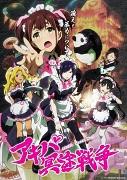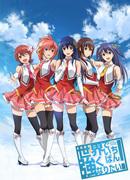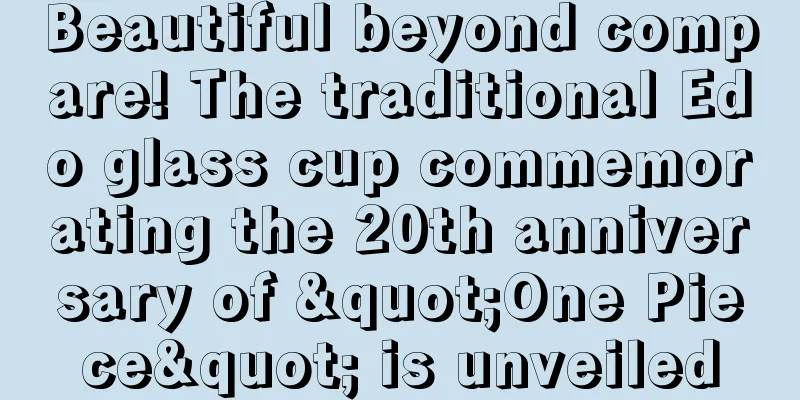"No Shot No Shot": A fusion of a novel concept and profound themes

Detailed evaluation and recommendation of Fushannosha■ Public MediaIndependent Production ■ Original MediaAnime Original ■ Release date1988 ■Frequencies25 min ■Original Story・Original work: Nakajima Atsushi's "Meijinden" ■ Director・Direction: Kihachiro Kawamoto ■ StoryDuring the Spring and Autumn Period and the Warring States Period, Kisho, who dreamed of becoming a master archer, visited Hiei in Handan, the capital of Zhao. He asked to be his disciple, but Hiei told him, "It's too early for you to hold a bow. Come when you can sleep with your eyes open." He mastered this in two years. When Kisho visited again, Hiei said, "Can you see the characters written on sesame seeds? Next, learn to see." After three years of staring at lice every day, Kisho mastered "seeing small things as big things." Hiei recognized Kisho and gave him the secret techniques. However, Kisho, who wanted to be the best in the world, planned to kill Hiei, but when his arrow was stopped, he felt ashamed. In order to master the way, Kisho visited Master Ganhai of Mount Emei, who had been taught by Hiei, and witnessed the art of shooting without a bow, in which a kite was shot down by just the gesture of shooting. After nine years of training on Mount Emei, Kisho returns to the city, but refuses to show off the mastery he has acquired in the mountains. Forty years pass, and he declares, "True actions are not done, true words are not spoken, true archery is not shot, and no archery is done." As Kisho grows older, he forgets how to use his name and does not use the bow. ■ExplanationThe story is based on Nakajima Atsushi's short story "Meijinden" (1952). Nakajima Atsushi, a writer who died young and grew up in an environment where many Chinese scholars were in his family, created "Meijinden" from the Chinese classic "Liezi" and is also known for other works such as "Sangezuki" (1951). Kawamoto says that he was initially recommended to work on "Sangezuki", but he chose "Meijinden" because it would be difficult to depict a scene in the story where a tiger cries in a serious manner using a stuffed toy. The story follows the young man Kisho as he undergoes various training sessions to become a master archer. His ambitious, fearless features change with each difficult training session. And when Kisho reaches a state of enlightenment, his face is filled with a calm expression. Kisho's facial expression is a mirror that reflects his heart, and the puppet shows us a concentrated spirituality that cannot be seen in humans. In this work, even the surroundings of the puppet, such as the depiction of the wind, the bubbles in the boiling water, the boiling water, and the flying ashes, are impressive in their skill and expressiveness that go beyond the realm of animation. In addition, the set of pine trees and rocky mountains reminiscent of the beautiful Chinese mountains and streams adds depth to the work. Archery, or the bow, was a military weapon in China's Spring and Autumn Period and Warring States Period. The bow in this work can be substituted for the modern day "nuclear weapon." Kawamoto says, "I wanted to reinterpret 'no archery' as 'nuclear weapon' and convey the message that we will not use it until we forget about nuclear weapons." This work was created in 1988, but even in today's world, where we are still faced with the ongoing problems surrounding nuclear weapons, we must never forget the message this work conveys to us. ■CastNarration by Isao Hashizume and Daolin Sun (Chinese version) ■ Main staff・Original work/Based on Nakajima Atsushi's "Masterpieces"・Producer/Guan Airyu・Screenplay/Kawamoto Kihachiro・Direction/Kawamoto Kihachiro・Music/Kim Fu-jae・Conductor/Chen Fu-xi・Performance/Shanghai Film Symphony Orchestra・Cinematography/Qiao Yuanzheng, Tamura Minoru・Art/Zhao Hong, Liu Yanxing・Props/Jiang Shuiquan・Puppet art/Kawamoto Kihachiro, Sun Daheung・Animation/Kawamoto Kihachiro, Xia Chengjun, Che Hui, Minegishi Hirokazu・Effects animation/Zhang Xinmin・Sound recording/Zhan Lei, Jiato Isamu・Sound effects/Zhang Yuanhao・Editing/Gong Limin, Xiao Junhai, Aizawa Naoko・Production staff/Wan Zhiqiang*, Yang Meiying, Lu Liqing, Ge Meijuan, Qu Zhiming, Ding Weimin, Xie Yougen, Jiang Aiqun, Xiao Gang, Xia Qiang*sheng, Zhang Zhexun, He Guonei * (The character for bow has a mouth on top and an insect on the bottom.) ■Detailed evaluation"Fuyanoshi" is an independent animation film released in 1988 by director Kihachiro Kawamoto, and is highly praised for its profound theme and beautiful visual expression. The film is based on Nakajima Atsushi's short story "Meijinden" and depicts the protagonist Kiyoshi's journey to becoming a master archer. Below, we will explain in detail the appeal of this film and its background. The appeal of the storyKisho's story is not just about becoming a master archer, but about a spiritual journey of introspection and true enlightenment. As Kisho learns from Feiwei, he overcomes difficult training, such as sleeping with his eyes open and looking at characters written on sesame seeds, which will deeply move viewers. Kisho's transformation from his ambition to kill Feiwei to finally mastering the art of "no arrow shooting" and shooting without using a bow is portrayed as a symbol of human growth and enlightenment. This story will give viewers an opportunity to look within themselves and will leave a deep impression. Beautiful visual expressionDirector Kawamoto Kihachiro's puppet animations are known for their precision and beauty. In "No Sha No Sha," the subtle changes in the expressions of Kisho and Feiwei, the movement of the wind and water, and the natural scenery are all depicted realistically. In particular, in the scene where Kisho trains at Mount Emei, a beautiful landscape reminiscent of China's mountains and rivers is depicted as the background, deepening the depth of the work. Furthermore, the movement of the wind and water depicted around the puppets has an artistic quality that goes beyond the realm of animation, making this a work that pursues visual beauty. The depth of the theme"No Archery" symbolically depicts the issue of nuclear weapons in modern society through the tool of a bow. Director Kawamoto said that through this work he wanted to convey the message that "we will not use nuclear weapons until we forget about them." From the time of production in 1988 to the present, the issue of nuclear weapons has still not been resolved. This work makes viewers think deeply about such issues in modern society, and sends a strong message to the viewer. ■Recommendation details"No Shot" is a work with profound themes and beautiful visual expression, and is especially recommended for the following viewers: People who love animation artDirector Kihachiro Kawamoto's puppet animations are known for their intricacy and beauty, and "Fuja no I" is a prime example of this. This is a must-see for viewers who pursue the artistry of animation, and is especially recommended for those who want to appreciate the technique and expressiveness of puppet animation. People seeking self-improvement and spiritual growthKi Sho's story depicts his spiritual journey of introspection and true enlightenment. This film will deeply inspire and move viewers who seek self-improvement and spiritual growth. It is especially recommended for those who are looking for an opportunity to overcome difficult situations and look inward. People who think about the problems of modern society"No Archery" symbolically depicts the issue of nuclear weapons in modern society through the tool of a bow. This work will make you think deeply about the issue of nuclear weapons, and will send a strong message to viewers who are thinking about the problems of modern society. It is especially recommended for those who pursue the values of peace and non-violence. ■ Related works and recommendationsWe recommend the following works related to "No Fire No Fire". These works also have profound themes and beautiful visual expressions, and are sure to leave a strong impression on viewers just like "No Fire No Fire". "Sangezuki"Nakajima Atsushi's short story "Sangetsuki" has also been animated by director Kihachiro Kawamoto. "Sangetsuki" tells the story of a man who transforms into a tiger, and is a work that depicts the struggles and enlightenment of humanity. Like "No Sha No Sha", it is a work with profound themes and beautiful visual expression that will leave a deep impression on viewers. "Ryezi"Nakajima Atsushi's "Mingren Biography" is based on the Chinese classic "Liezi." "Liezi" is also a work with profound themes and beautiful visual expression, and like "No Sha Zhi Sha," it is sure to leave a strong impression on viewers. It is especially recommended for viewers who are interested in classical Chinese literature. "Spirited Away""Spirited Away" by director Hayao Miyazaki is also a work with profound themes and beautiful visual expression, and will leave a strong impression on viewers just like "Fuuha no Isha". I highly recommend it to viewers who are seeking self-development and spiritual growth. ■ Summary"Fuyanoshi" is a work with profound themes and beautiful visual expression, which will deeply move and inspire the viewer. This work is especially recommended for people who love animation art, those who seek self-development and spiritual growth, and those who think about the problems of modern society. In addition, related works such as "Sangetsuki", "Liezi", and "Spirited Away" also have profound themes and beautiful visual expression, and will deeply move the viewer just like "Fuyanoshi". Please watch these works and enjoy their profound themes and beautiful visual expression. |
<<: Self-Portrait Review: A profound journey of self-discovery
>>: "Potomus the Hippo" review: A fascinating story and deep characters
Recommend
The Witcher TV series may be broadcasted until Christmas
The start time of Netflix's "The Witcher...
Kennosuke: Thorough evaluation of the fascinating characters and depth of the story
The appeal and evaluation of "Kennosuke-sama...
The appeal and reviews of "Absolute Duo": New possibilities for school battle anime
Absolute Duo - In-Depth Review and All-Round Guid...
The appeal and reviews of "Momentary Lily": A moving story and the depth of its characters
Momentary Lily - Momentary Lily - Comprehensive r...
"Neon Genesis Evangelion: 3.0 You Can (Not) Redo" is temporarily suspended
"Neon Genesis Evangelion: 3.0 You Can (Not) ...
The appeal and reviews of "Kazuto Monogatari": You can't miss it!
The appeal and evaluation of Fuujin Monogatari In...
Review and impressions of "Fate/stay night Unlimited Blade Works": A fusion of an epic story and beautiful visuals
Fate/stay night Unlimited Blade Works ■ Public Me...
There is no trailer for Guardians of the Galaxy Vol. 3 because the special effects are not yet completed
At the San Diego Comic-Con, Marvel did not releas...
Review of "Shura no Suke Zanmaden: The Man with the Shikama Crest": A novel story and fascinating characters
Shuranosuke Zanmaken - Man with the Death Sickle ...
The first 8 minutes of the movie "Ghost in the Shell: SAC_2045" are released for a limited time of 2 weeks
Netflix's original 3DCG animation "Ghost...
New stills of "Jurassic World 3" show a black actress playing a bisexual character
Recently, new stills of "Jurassic World 3&qu...
"Maleficent 2" first releases Chinese subtitles trailer Angelina Jolie returns
Disney Pictures released the first trailer of the...
007 film producer says he doesn't want a female Bond
With Daniel Craig stepping down as 007 after No T...
Review of "Ongaku Shoujo": moving melodies and youthful harmonies
"Ongaku Shoujo" - A moving story about ...
"Renren Film and Television" was investigated for pirated film and television resources, and the amount involved exceeded 16 million yuan
In September 2020, the Shanghai police discovered...









